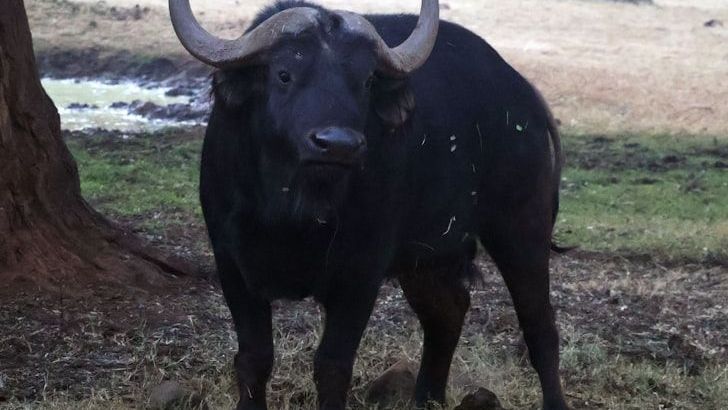Unexpected Resilience in Wolf Country (Image Credits: Unsplash)
In the crisp autumn air of northern California’s rugged terrain, a faint howl echoes through the trees, signaling life’s quiet persistence amid ongoing challenges.
Unexpected Resilience in Wolf Country
Imagine the thrill of spotting wild wolves where they haven’t roamed freely for generations. That’s the reality unfolding in California right now. Just as news broke about the loss of one pack, another has stepped into the spotlight, proving these animals’ tenacious spirit.
The California Department of Fish and Wildlife confirmed the Grizzly pack this fall, a family of two adults and a pup carving out territory in southern Plumas County. This discovery keeps the state’s wolf count steady at 10 packs, even after the Beyem Seyo pack’s tragic removal. It’s a reminder that nature doesn’t pause for our conflicts.
Experts hail this as a positive sign for recovery. With over 30 new pups born this year, the population hovers around 50 wolves statewide. Yet, the balance between wildlife and human needs remains delicate.
The Story Behind the Beyem Seyo Loss
Heartbreaking decisions often mark wildlife management. The Beyem Seyo pack in Lassen County met a tough end in October due to repeated livestock attacks. Officials euthanized four wolves to protect local ranchers, sparking debates across the region.
This wasn’t taken lightly. The pack had been monitored closely, with collars tracking their movements. Conflicts like these highlight the growing pains of wolves returning to areas long without them, where cattle grazing is a way of life.
Still, such incidents are rare compared to the packs’ overall peaceful existence. Conservation groups point out that non-lethal deterrents, like guard dogs and fencing, could ease tensions without resorting to lethal measures.
Meet the Grizzly Pack: A Family on the Move
Nestled in the Sierra Nevada’s foothills, the Grizzly pack embodies the wild’s unyielding comeback. Camera traps and surveys first hinted at their presence, capturing glimpses of the trio navigating dense forests and open meadows.
The adults likely dispersed from established packs farther north, drawn by vast, prey-rich landscapes. Their pup, born earlier this year, adds to the optimism. Monitoring continues to ensure they thrive without stirring up trouble.
This pack’s territory overlaps with rural communities, so early outreach to locals is key. Sharing space with wolves means adapting, but it also revives ecosystems long missing top predators.
Wolf Recovery: Milestones and Hurdles
California’s wolves have come a long way since the first lone wanderer crossed from Oregon in 2011. Today, packs dot the northern counties, from Shasta to Tulare, marking the species’ gradual reclaiming of historic range.
Key factors fueling this rebound include federal and state protections under the Endangered Species Act. Dispersing wolves keep the gene pool diverse, preventing inbreeding in small populations.
However, threats loom. Proposed federal bills could strip protections, while local resolutions in some counties fuel misinformation. Ranchers seek more support, like compensation for losses, to coexist peacefully.
Balancing Act: Humans, Wolves, and the Land
Ranching families in wolf territory face real worries. Livestock depredations, though infrequent, hit hard financially and emotionally. Groups like the California Wolf Project work to bridge gaps through education and tools.
On the flip side, wolves boost biodiversity by controlling deer populations, which in turn protects vegetation and reduces wildfire risks. It’s a web of connections that benefits everyone in the long run.
- Non-lethal options: Range riders, fladry fences, and light-activated devices deter wolves effectively.
- Compensation programs: Some states offer reimbursements, and California is exploring expansions.
- Community involvement: Workshops help neighbors spot signs and report sightings early.
- Scientific monitoring: GPS collars provide data to predict and prevent conflicts.
- Legal safeguards: Endangered status ensures measured responses to issues.
Looking Ahead: What This Means for the Future
As California’s wolf story evolves, the Grizzly pack’s arrival underscores a broader truth: recovery isn’t linear, but it’s possible with careful stewardship. The state’s 10 packs signal momentum, yet sustaining it demands collaboration between conservationists, landowners, and officials.
Key Takeaways
- Wolves’ return enriches ecosystems but requires proactive conflict management.
- New packs like Grizzly show population growth despite setbacks.
- Public awareness and innovative solutions can foster harmony in shared spaces.
In the end, these gray ghosts remind us of nature’s resilience and our role in it. What steps do you think could help wolves and ranchers thrive together? Share your thoughts in the comments.








